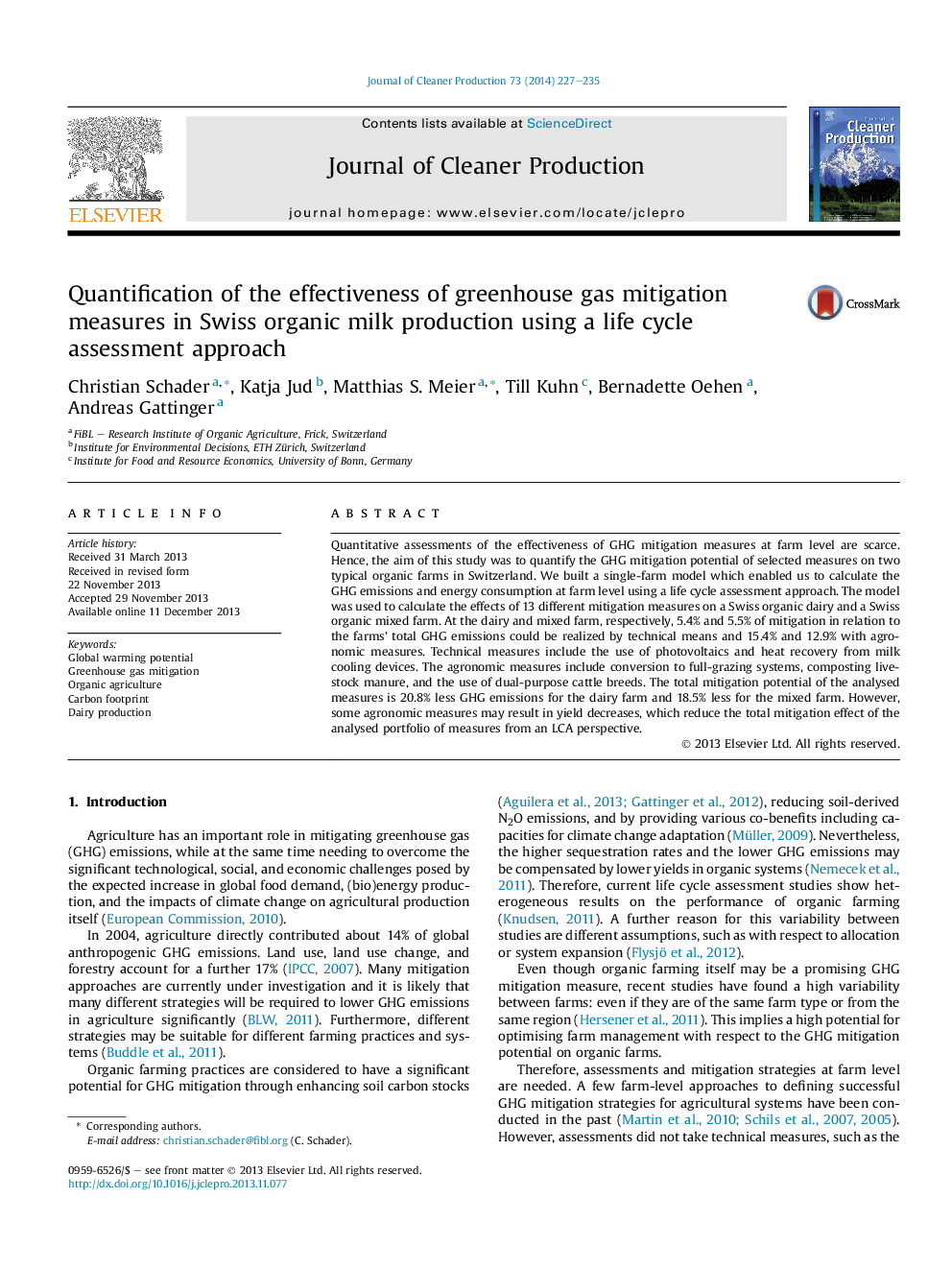| Article ID | Journal | Published Year | Pages | File Type |
|---|---|---|---|---|
| 8106389 | Journal of Cleaner Production | 2014 | 9 Pages |
Abstract
Quantitative assessments of the effectiveness of GHG mitigation measures at farm level are scarce. Hence, the aim of this study was to quantify the GHG mitigation potential of selected measures on two typical organic farms in Switzerland. We built a single-farm model which enabled us to calculate the GHG emissions and energy consumption at farm level using a life cycle assessment approach. The model was used to calculate the effects of 13 different mitigation measures on a Swiss organic dairy and a Swiss organic mixed farm. At the dairy and mixed farm, respectively, 5.4% and 5.5% of mitigation in relation to the farms' total GHG emissions could be realized by technical means and 15.4% and 12.9% with agronomic measures. Technical measures include the use of photovoltaics and heat recovery from milk cooling devices. The agronomic measures include conversion to full-grazing systems, composting livestock manure, and the use of dual-purpose cattle breeds. The total mitigation potential of the analysed measures is 20.8% less GHG emissions for the dairy farm and 18.5% less for the mixed farm. However, some agronomic measures may result in yield decreases, which reduce the total mitigation effect of the analysed portfolio of measures from an LCA perspective.
Keywords
Related Topics
Physical Sciences and Engineering
Energy
Renewable Energy, Sustainability and the Environment
Authors
Christian Schader, Katja Jud, Matthias S. Meier, Till Kuhn, Bernadette Oehen, Andreas Gattinger,
